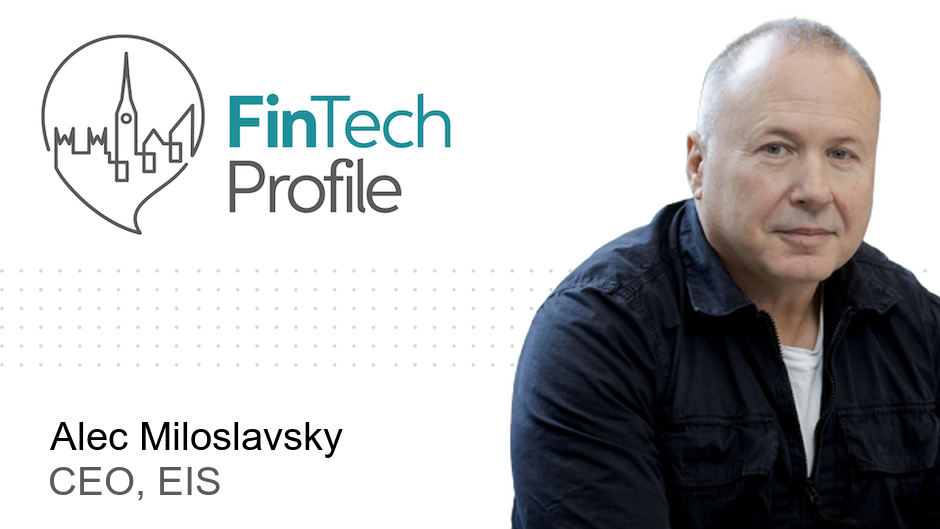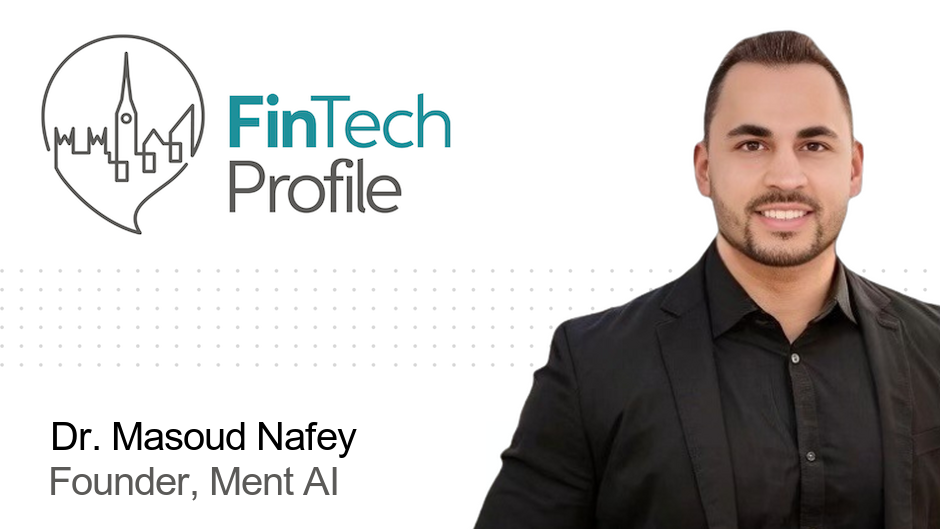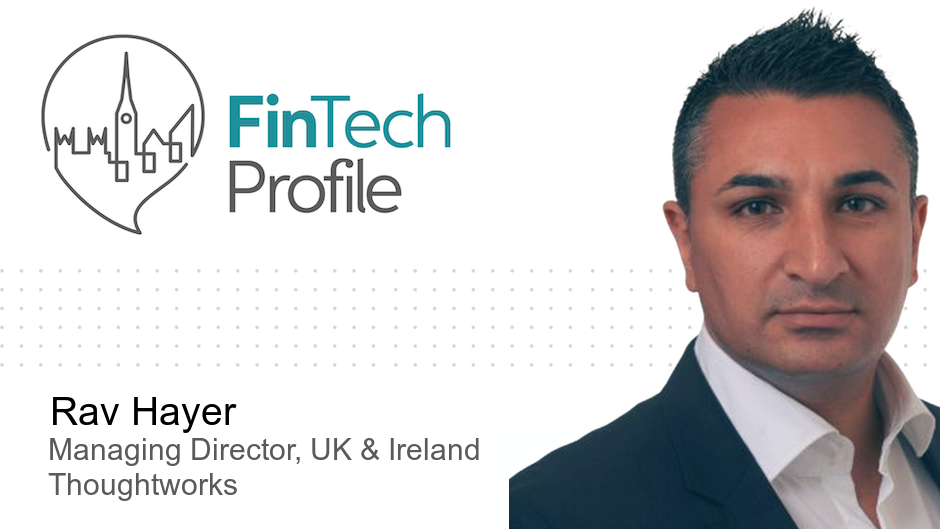Alec Miloslavsky, CEO of EIS

Today we're meeting Alec Miloslavsky, CEO at EIS. They specialise in providing the first cloud-native core platform purpose-built for the insurance industry.
Over to you Alec - my questions are in bold:
Who are you and what's your background?
I've spent my career at the intersection of enterprise software and large-scale transformation, typically founding and scaling businesses that modernize critical industries. Before starting EIS, I co-founded Genesys Telecommunications Laboratories, a global leader in customer experience and contact centre solutions, where I helped take the company public before its $1.9 billion acquisition by Alcatel.
I started EIS after seeing a major opportunity in the insurance industry. Insurers were grappling with rigid legacy systems that made it nearly impossible to adapt to changing customer expectations or economic realities. With my background in enterprise system design, I knew we could do better.
One mindset that's always shaped my approach, whether building platforms or leading companies, is how I think in terms of systems. Some engineers see a bridge as a way to connect two points. I see the broader ecosystem it enables: the movement of people, the flow of commerce, the industries it sustains. It's never just about the platform, it's about what it unlocks. That's the thinking I brought to EIS.
EIS OneSuite™ was built with that philosophy in mind. Not simply as a replacement for legacy tech, but as an enabler of a more agile, connected, and customer-driven insurance future. It's a platform designed to support transformation, not just technically, but strategically.
What is your job title and what are your general responsibilities?
I'm the CEO of EIS, which means no two days are ever quite the same. But there are some consistent threads. My time is split across several key areas. I stay closely connected to our internal teams, engaging regularly with staff across the business. I'm involved in customer-facing engagements, whether that's pre-sales conversations, strategic account management, or broader business development. I also spend a fair share of time with our board and investors, ensuring alignment around our financial goals and long-term strategy.
My decisions are guided by two overarching forces: our long-term strategic vision and our near-term economic goals. That balance helps ensure we are building for the future while delivering results today. One moment I might be deep in a compensation discussion or refining internal processes, the next, I'm helping a customer think through how our platform can unlock new growth. Ultimately, my role is to keep all parts of the business moving toward a shared, forward-looking objective.
Can you give us an overview of your business?
EIS is the first cloud-native core platform purpose-built for the insurance industry. It has been designed specifically for ambitious insurers who recognise that surviving in today's market isn't enough. To truly thrive, you need to be agile, digital-first, and relentlessly customer-focused. That's where we come in.
At the heart of our offering is EIS OneSuite™, a unified, cloud-native, API-first platform that supports any line of insurance and gives insurers the speed, scalability, and control to lead in a rapidly evolving world.
The reality is, insurance is under serious pressure. Economic volatility, climate-related catastrophes, supply chain disruption, and rising claims costs are all squeezing margins. At the same time, many insurers are still burdened by legacy systems - platforms that are outdated, siloed by design, and increasingly incompatible with the technology ecosystems of today. The cost of doing nothing is now greater than the cost of change.
Today's customers expect more: flexible products, seamless digital journeys, and personalised service - similar to the experiences delivered by the likes of Amazon or Netflix. They want control, convenience, and seamless digital engagement across every channel.
The good news is the technology to deliver on these expectations already exists. That's what EIS provides: a modern, modular, and future-ready platform proven across more than 60 successful implementations with a 100% delivery track record.
With EIS OneSuite, insurers can break free from legacy constraints and confidently lead in a digital-first world.
Tell us how you are funded?
EIS began as a founder-funded venture, with the initial capital coming primarily from me. As the company grew, we brought in a partner through a personal relationship. It was a privately arranged deal, built on trust and mutual understanding, without the typical formality of a structured funding round.
As we scaled further, we brought in institutional investment from TPG, one of the world's leading private equity firms. That round was highly competitive, with multiple top-tier firms showing interest - not just in investing, but in acquiring the business. We weren't looking to sell, so we focused on structuring a deal that would allow us to retain control while benefiting from a top-tier strategic partner.
What I've learned from that journey is that finding the right investor is as much about shared vision and cultural alignment as it is about capital. A good investor brings more than money. They bring operational expertise, market insight, and the ability to challenge you in the right way. It's a bit like choosing a co-founder later in the journey. Chemistry matters.
What's the origin story? Why did you start the company? To solve what problems?
EIS was founded to solve a very specific and very stubborn problem in insurance: the drag of legacy technology. We saw a sector struggling under the weight of outdated core systems that made it hard to innovate, slow to respond to changing customer expectations, and expensive to run. Digital transformation was top of mind for insurers, but few had the tools or flexibility to actually make it happen.
That's where the idea for EIS was born. We wanted to build a platform that would give insurers the same kind of agility, scalability, and speed that modern tech companies take for granted. A system that could power core operations and also enable real-time, customer-centric engagement across every channel and product line.
From day one, our vision has been to give insurers a clean slate. A way to reimagine how they operate, launch products faster, respond to market shifts, and truly compete in the digital age. We don't just replace old systems, we help organisations fundamentally change the way they work.
It's about enabling progress. Helping insurers move from constrained to competitive, from slow to scalable. That mission continues to drive us today.
Who are your target customers? What's your revenue model?
Our core customers are global insurers that recognise the need to modernise their operations to stay competitive. These are organisations looking to break free from legacy systems and adopt a more agile, customer-centric approach to insurance. We support them in transforming how they manage products, engage policyholders, and operate at scale.
Our revenue model is usage-based. We charge based on the volume of business our clients process through our platform. Specifically, the amount of Direct Written Premium (DWP) processed through our platform. It's a model that aligns our success with our clients. As they grow, we grow. This structure also creates a strong foundation of recurring revenue and predictable growth.
If you had a magic wand, what one thing would you change in the banking and/or FinTech sector?
I'd change the way insurers frame transformation, shifting their mindset from system replacement to business reinvention.
Too often, there's a disconnect between ambition and action. Insurers talk about becoming more competitive, more customer-centric, more digitally fluent. But when it comes to buying technology, they fall back on a legacy mindset. Instead of looking for a new way of working, they look for a system that replicates how they operate today, just slightly more efficiently. It becomes a like-for-like swap, not a strategic shift.
That mindset traps them in the same cycle they've been stuck in for years: costly, rigid transformations that deliver incremental gains but fall short of their broader goals. They end up with modern-looking systems that can't flex, scale, or evolve as the market changes.
What they actually need is a platform that enables real change. One that supports speed, agility, and continuous adaptation. One that reduces, not increases, the long-term cost of change, and one that makes it easy to build ecosystems, integrate new services, and fully leverage technologies like AI. That's what EIS is built for.
Can you list 3 people you rate from the FinTech and/or Financial Services sector that we should be following on LinkedIn, and why?
Here are three individuals I greatly respect, each of whom brings something unique to the evolution of insurance and technology:
- John Heveran (Former EVP & CIO, Liberty Mutual)
John was one of the first technology leaders I encountered in insurance who truly thought differently. He championed the idea that even the largest insurers must operate like tech companies by embracing speed, agility, and innovation at scale. His leadership helped bring cloud technologies into Liberty Mutual at a time when few in the industry were even considering it. That kind of forward-thinking mindset is rare and transformative. - Tom Troy (Former CEO, CSAA Insurance Group)
Tom is a true modern insurance leader. He's commercially sharp, deeply knowledgeable about the mechanics of insurance, and extremely tech-savvy. He's someone who understands both the operational detail and the strategic big picture. He knows how to make deals, how to drive growth, and how to connect it all back to the customer experience. - Rowshi Pejooh, Head of Product
Internally, I have immense admiration for our team of founders that helped shape EIS. Rowshi, our Head of Product has been instrumental in ensuring we stay ahead of the curve. Not just in what we build, but in how we think. Her technical depth, product intuition, and long-term vision have played a huge role in our growth and success. - Mike Dwyer, Chief Technology Officer
As CTO, Mike Dwyer has been central to shaping our vision since day one. He leads our R&D and product management teams, ensuring that our platform continues to set the standard for innovation, scalability, and usability. His deep technical expertise and forward-looking approach are central to delivering best-in-class products and roadmaps.
Finally, let's talk about predictions. What trends do you think are going to define the next few years in the FinTech sector?
The next phase of transformation in insurance, and FinTech more broadly, won't be driven by what technologies are adopted, but how they're used. Cloud, AI, APIs - these aren't emerging trends anymore. The real differentiator is how well organisations align these tools with long-term adaptability, cost control, and customer ownership.
We'll see increasing scrutiny on the cost of change. It's no longer just about initial implementation costs. It's about how quickly you can adapt to new demands without re-engineering your entire stack. Flexibility, modularity, and vendor-neutral strategies will be key.
AI will continue to expand in scope, but its true potential will remain out of reach for many until foundational issues like data governance, integration, and ethical risk are addressed. In parallel, I expect more insurers to question the predictability and transparency of cloud costs, especially when tied to proprietary platforms.
Ultimately, I think the leaders in this next chapter will be those who resist the lure of trend-chasing and focus instead on building future-ready foundations - platform-agnostic, ecosystem-compatible, and designed for continuous change.
Thank you very much, Alec!
Read more about Alec Miloslavsky on LinkedIn and find out more about EIS at eisgroup.com.




